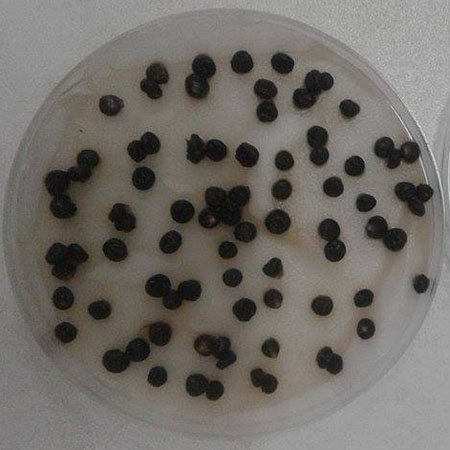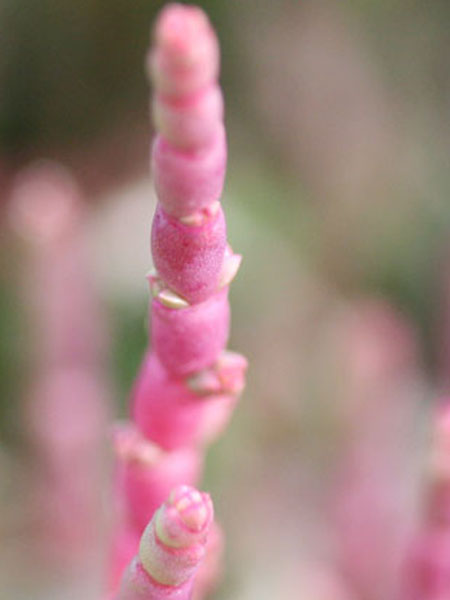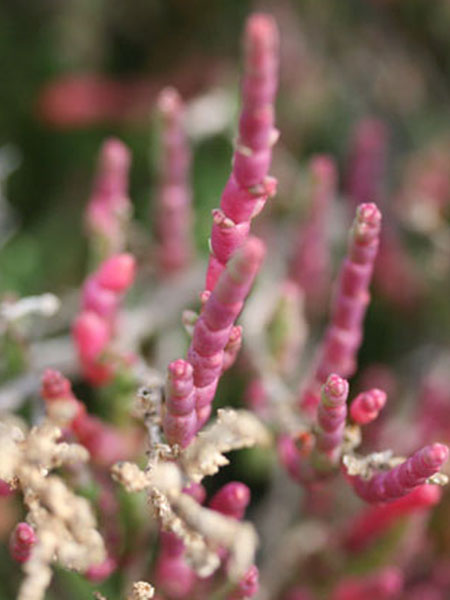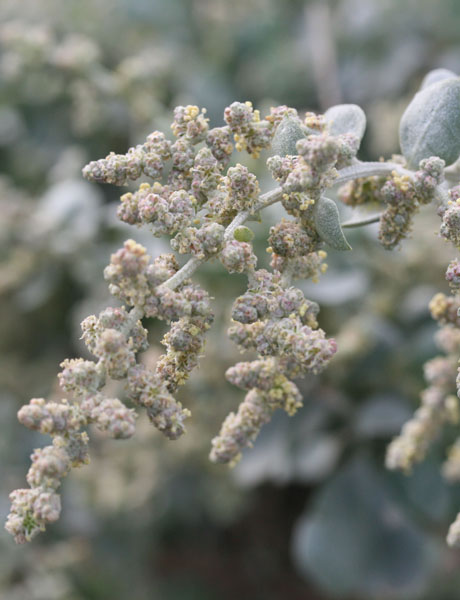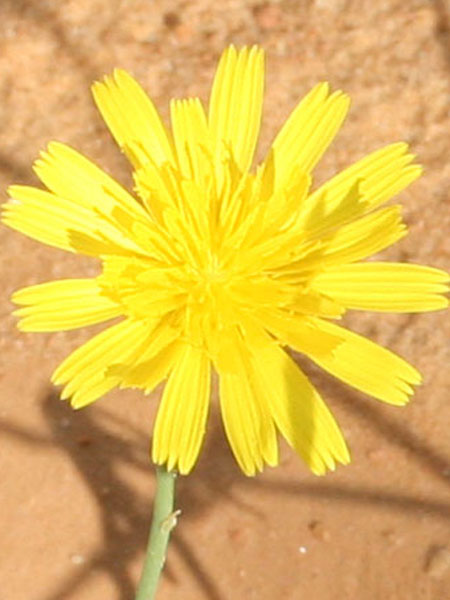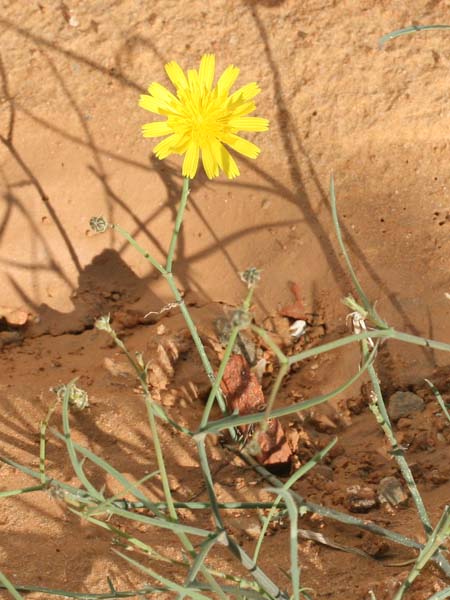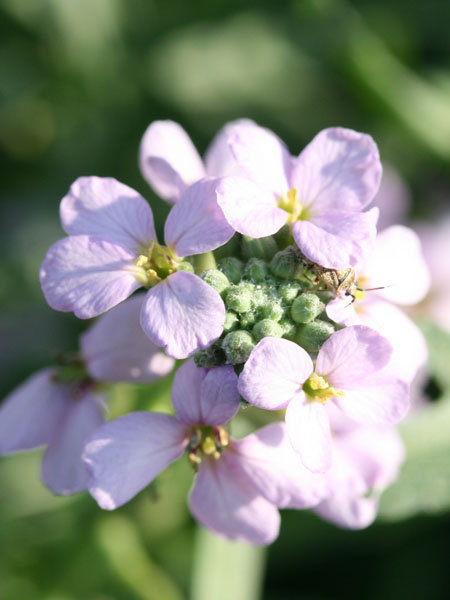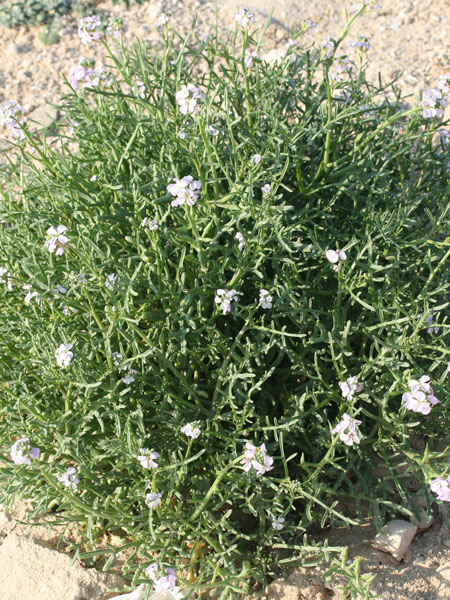Salsola soda
Kingdom : Plantae / النّباتات
Division : Spermaphyta / البذريات
Clade : Magnoliophyta or Angiospermae / مستورات البذور
Class : Eudicotyledoneae / ذات الفلقتين
Order : Caryophyllales / رتبة القرنفليات
Family : Amaranthaceae [Chenopodiaceae] /فصيلة السّرمقيات أوالرّمراميّة أو القطيفيّة
Genus : Salsola
species : soda
Chromosomes: 2n=18
Protologue
L., Sp. Pl., ed.1, 223 (1753)
Common names
Tunisia Arabic English French Tamazight
السّويدة
السّويدة
Opposite-leaved saltwort
Oppositeleaf Russian thistle
Barilla plant
Soude commune
Toxic
no
Edible
yes
Latex
no
Botanic description
Genus description
"Polygamous flowers or with 2 lateral bracts. Perigon usually 5 deep lobes, provided on the back with a spreading membranous wing simulating a corolla (reduced to a hull in S. soda), Etamines 5, protruding at flowering. Fruit depressed, locked in the perigone accrescent closed. Horizontal seed.
Species description
"Halophyte plant glabrous, grassy, smooth, succulent measuring between 20 to 70 cm. Germination is naturally weak, but once germinated the plants grow well with some parasites.
Leaves sessile. alternate (except the inferior), long, soft, fleshy, semi-cylindrical, terminated by a fine and not spicy silk, Flowers by 1-2. Lanceolate bracts protruding from the flowers. Fruits in the end very widely spaced (1-2 cm) occupying almost the entire length of the twig.
Botanic References
Pottier-Alapetite G. (1981). Flore de la Tunisie Angiospermes –Dicotylédones (Apétales- Dialypétale , Première partie). Imprimerie Officielle de la République Tunisienne (Eds), 64p. Edouard LE FLOC’H, Loutfy BOULOS et Errol VELA. (2010). Catalogue synonymique commenté de la FLORE DE TUNISIE. République Tunisienne, Ministère de l’Environnement et du développement durable, Banque Nationale de Gènes. 500 p www.theplantlist.org
Biology
Life form Annuel Type form Thérophyte Photosynthesis C4
Phenology
Blooming
JanuaryFebruaryMarchAprilMayJuneJulyAugustSeptemberOctoberNovemberDecember
Fruiting
JanuaryFebruaryMarchAprilMayJuneJulyAugustSeptemberOctoberNovemberDecember
Map Localization
Ecology
Adaptation Sandy maritime. Salt bladder no Invasive no
Geographical distribution
Localization Biocimatic stage Annuel pluviometry (mm) GPS Monastir (Skanès, Palais Oct.2014; Skanès Août 2015) Inferior semi-arid 331 35°46'45.61"N / 10°47'17.68"E 35°46'43.02"N / 10°47'36.28"E
General uses
The plant is used to make soda: The ashes obtained after combustion of the plant were combined with lime, one thus obtained caustic soda. This soda was then used in the manufacture of soap in particular. It is consumed freshly harvested, it is quite firm and crunchy with a pleasantly acidic flavor, such as spinach and chard. Often described as "the taste of spring". Salsola soda has been studied as a desalinizing companion plant (soil bioremediation) for tomato and pepper crops when grown in saline soils. Salsola extracts enough sodium from the soil to enhance the growth of the crop and a better crop yield results despite competition from both plants for the rest of the soil minerals. The plant is most often cooked and eaten as a leafy vegetable, the recommendation is to cook it in boiling water until the leaves soften while remaining crisp (a bit like salicornia). In Italy, it is eaten antipasti, cooled, with olive oil, garlic and lemon. It can also be consumed raw.
Medicinal uses
"
NOTE : This website is not that of herbal medicine and assumes no responsibility for the negative effects of the use of plants. Seek advice from a professional before using a medicinal plant.
Systems / Organs / Effects
Test results
TPC DPPH ABTS+ FRAP Year mg GAE g-1 MS CI50 g ml-1 CI50 g ml-1 CE50 g ml-1 14,67± 0,36 12,74± 0,44 8,79± 0,16 207,29± 1,85 2016 Total Phenols content(TPC), Anti-radical potentialities against (DPPH, ABTS), Ferric reducing antioxidant power(FRAP)
Molecules : ADN / Proteins
Chromosomes : 18 Uniprot NCBI
Chemical composition
Name Phenolic compounds Polyphenols
Tunisian references
Other references
Colla G, Rouphael Y, Fallovo C, Cardarelli M.(2006). Use of Salsola soda as a companion plant to improve green house pepper (Capsicum annuum) performance under saline conditions New Zealand Journal of Crop and Horticultural Science, Vol. 34: 283-290 Dubravka M Mili , Jadranka Ž Lukovi , Lana N Zori , Ljiljana S Merkulov. (2013). Structural adaptation of salsola soda L. (Chenopodiaceae) from inland and maritime saline area Jour. Nat. Sci, Matica Srpska Novi Sad, 125, 55—67. Ghaffari SM, Balaei Z, Chatrenoor T and Akhani H.(2015). Cytology of SW Asian Chenopodiaceae: new data from Iran and a review of previous records and correlations with life forms and C4 photosynthesis. Plant Systematics and Evolution. 301, 2, 501-521. Grigore M-N, Toma C. (2010). Salt-secreting structures of Halophytes. An integrative approach (in Romanian). Link: https://archive.org/details/SALTSECRETINGSTRUCTURESOFHALOPHYTES Koce JD, Skondric S, Bacic T and Dermastia M. (2008). Amounts of nuclear DNA in marine halophytes.Aquatic Botany. 89, 4, 385-389. Mosqueda EG.(2015). Evaluation of adaptability, yield, and boron tolerance of Agretti (Salsola soda L.) grown on poor quality soils of the San Joaquin Valley in Central California California State University, Fresno. Pyankov VI, Ziegler H, Akhani H, Deigele C, Luttge U. (2010). European plants with C4 photosynthesis: geographical and taxonomic distribution and relations to climate parameters. BOTANICAL JOURNAL OF THE LINNEAN SOCIETY. 163, 3, 283 -304. Sonjak S, Udovic T, Wraber M Likar and M. Regvar. (2009). Diversity of halophytes and identification of arbuscular mycorrhizal fungi colonising their roots in an abandoned and sustained part of Secovlje salterns. Soil Biology & Biochemistry. 41, 9, 1847-1856. Zohary M. (1966) Flora Palaestina I. Equisetaceae to Moringaceae.


































